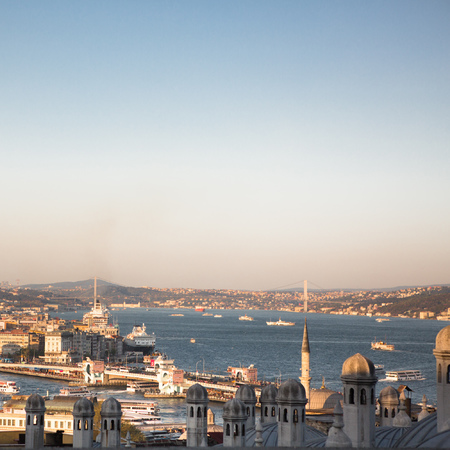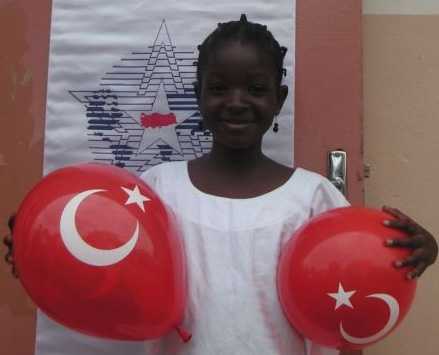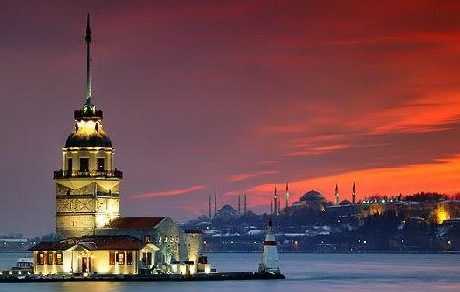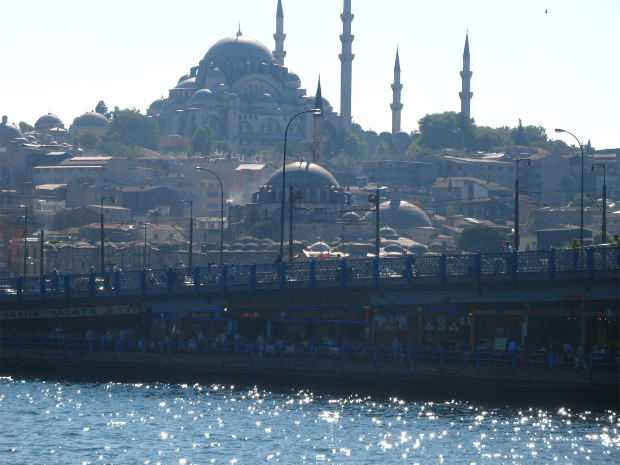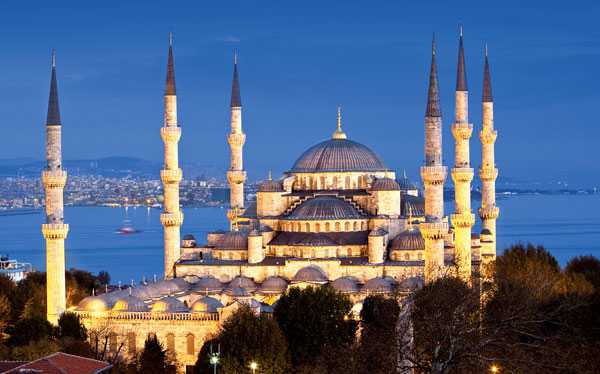CLAIRE BERLINSKI
Dread and exhilaration in a city on the verge of political catastrophe
The City grew rapidly, dwarfing in size and population any other in the country. The streets stimulated like cocaine; horns honked, crowds surged, nerves jangled. To step outside was to be electrified by the harlequinade of roaring colors, bright lights, rushing traffic. Sybaritic nightclubs thrummed until dawn and well thereafter; strange and perverse sights were to be found on every boulevard, in every alley, at every hour, the aesthetic of contradiction between civilization and barbarity heightened by the ersatz baroque of the old architecture and the shocking ugliness of the new. Transvestites prowled, thieves pickpocketed, and in the fashionable cafés, intellectuals smoked furiously and complained of their anomie.
The Old World had vanished, and with it its agrarian economy, its reassuring class distinctions and social order. An alien and fragile political order had been imposed in its place. Experimental music, art, and cinema flourished; fascinations arose with utopianism, fortune-telling, mysticism, communism.
But there was at once a paranoid mood, a sense of impending doom. Markers of the City’s great imperial past evoked its former glory while proving its decline. The art of the epoch was fueled by the fear of imminent crisis and breakdown. Decadent American culture was hungrily emulated, passionately deplored. Painters produced works genuinely shocking to the eye; writers wrote novels so offensive to bourgeois sensibilities as to provoke threats of murder. A misogynistic terror of women dominated cultural and political debate: Had modernity destroyed their virtue?
If the City was now the undisputed capital of the region’s commerce and industry, all remembered the horror of hyperinflation, which had obliterated the fruit of lifetimes of hard work, and all remembered with contempt the feuding coalition governments whose incompetent stewardship had brought the nation to ruin. The economy’s recent growth was vertiginous but precarious, funded by overseas loans that massively increased the nation’s debt. Unemployment rose and rose. A poorly understood global economic crisis fueled dark conspiracy theories. Daily political violence lent to life a pervasive feeling of menace. The newspapers overflowed with right-wing propaganda. Screaming headlines reported violent clashes in the streets. Intellectuals were assassinated.
The constitution was new and weak, lacking legitimacy and vulnerable to subversion. Many in the City believed that foreign powers were conspiring to weaken and humiliate the nation. Most were cynical about democratic experiments; all were revolted by the selfishness and corruption of their political parties. The cravenness of the industrialists and the business class provoked widespread disgust with capitalism itself. Many yearned for, many openly demanded, a more authoritarian government. Europe, America, and particularly the Jews—those sinister, infinitely powerful magicians—were blamed for the City’s discontents.
A shouting demagogue, having once been arrested for his extremist views, now focused on legal methods of attaining power. He would restore the nation to its former glory, he promised. Intellectuals thought him a ruffian and a buffoon.
The City was proud: it was the new vanguard, the greatest metropolis in the world! It was ashamed: look at what had been lost, how ugly it had become! The City “delighted most, terrified some, but left no one indifferent, and it induced, by its vitality, a certain inclination to exaggerate what one saw.” So Peter Gay described Weimar Berlin.
But his descriptions, as do all of these, might have been written about the Istanbul in which I live. There is a spookiness to living in a city at the epicenter of an impending political catastrophe, a mood of dread but also of astonishing vitality—economic, creative, artistic. It is a distinctive mood and, to anyone acquainted with history, a familiar mood.
There is, it seems, such a phenomenon as a Weimar City.
What is a Weimar City? It is a city rich in history and culture, animated by political precariousness and by a recent rupture with the past, vivified by a shocking conflict with mass urbanization and industrialization; a city where sudden liberalization has unleashed the social and political imagination—but where the threat of authoritarian reaction is always in the air.
Weimar Cities are not freaks of nature. They may be expected to arise under certain social, political, and historical circumstances. World War I destroyed both Imperial Germany and the Ottoman Empire. The remnants of both entities succeeded in imposing alien new social orders on themselves, fragile experiments in democracy. The Turkish Republic has lasted far longer than the Weimar Republic, but the stories do not differ in the fundamentals; they have merely been telescoped or expanded by contingent events.
With the rise to power in 2002 of the Justice and Development Party, or AKP, the Turkish Republic has experienced a fresh convulsion. The AKP opened the Pandora’s box of political Islam. It has presented its reforms as an exercise in liberalization. In a sense, this is true: religion as a political force had, since the founding of the Republic, been repressed. In another sense, it is not true at all: this particular political force is one that, by its nature, tends ultimately to erase liberal reforms. “Democracy is like a streetcar,” Recep Tayyip Erdoǧan, now prime minister, said infamously in 1995. “When you come to your stop, you get off.”
Turkey is now in the throes of two revolutions. The social transformations over which Mustafa Kemal Atatürk presided have not yet been assimilated; simultaneously, something new—and old—has rushed up to challenge them. The ancient order is thus disappearing doubly. Cultures, it would seem, react in particular ways to the disappearance of ancient orders. The febrile characteristics of Weimar Cities appear at just such times—the in-between times. As fever is a sign of disease, so it is a sign of social dislocation.
Weimar Cities have emerged, blazed, and died throughout history. The sack of Rome and the fall of the Empire prompted Augustine to write The City of God, the work itself an emblematic admixture of the anxiety and creativity that marked the epoch. Constantinople before the fall was consumed with evil prophecies and the well-founded fear that Byzantine culture was as doomed as it was glorious. A similar mood possessed the extravagantly genteel elite of antebellum Charleston. Moscow and Saint Petersburg in 1917 were cities of this sort, marked by the kinetic creative energy that accompanies the belief that the forces of history will soon somehow sweep away the past. The tortured intellectual blossoming of Vienna at the turn of the century was intimately connected with a sense of helplessness about the city’s fate, which all who lived there understood was not in their hands. The currency crash of 2002 prompted a creative efflorescence in Buenos Aires. San Francisco during the Summer of Love was a Weimar City, Hunter S. Thompson’s famous Wave Speech a characteristic signature: “There was madness in any direction, at any hour. If not across the Bay, then up the Golden Gate or down 101 to Los Altos or La Honda. . . . You could strike sparks anywhere.”
All were cities marked by voluptuous excess, excitement, and fear, but the archetype, of course, is Berlin in the twenties. “There is no city in the world so restless as Berlin,” recalled the diplomat Harold Nicolson:
Everything moves. The traffic lights change restlessly from red to gold and then to green. The lighted advertisements flash with the pathetic iteration of coastal lighthouses. The trams swing and jingle. . . . In the Tiergarten the little lamps flicker among the little trees, and the grass is starred with the fireflies of a thousand cigarettes. Trains dash through the entrails of the city and thread their way among the tiaras with which it is crowned. The jaguar at the zoo, who had thought it was really time to go to bed, rises again and paces in its cell. For in the night air, which makes even the spires of the Gedächtniskirche flicker with excitement, there is a throbbing sense of expectancy. Everybody knows that every night Berlin wakes to a new adventure. Everybody feels that it would be a pity to go to bed before the expected, or the unexpected, happens. Everyone knows that next morning, whatever happens, they will feel reborn.
Could there be such excitement without danger? I doubt it. Never was the Weimar Republic viewed as legitimate by its enemies, and never has the secular state been viewed as legitimate by its enemies here. Both societies have been destabilized in turn by leftist subversion, right-wing militias, assassinations, endless coup plots, the savage repression of protests and strikes. The Nazis evoked nostalgia for a social and moral past that they proposed to restore, and so does Turkey’s AKP government. Just look at the map of the Ottoman Empire, say its diplomats. Turkey is returning to its rightful place.
Berlin in the twenties was a polyglot city, struggling to absorb immigrants: Jews from the east, Russians fleeing the revolution. So, too, Istanbul, swollen with mass migration from the east, large populations of Kurds, and refugees from the many nearby conflict zones: Iraq, the Balkans, Afghanistan, Chechnya. Berlin had only the most limited power of assimilation; ethnic violence was always close to the surface. It was no melting pot, and neither is Istanbul, as recent headlines here suggest:KURDISH REBELS ADMIT ISTANBUL BUS BOMBING. STRATEGY EXPERT WARNS OF ETHNIC CLASHES. ETHNICALLY POLARIZED SOCIETIES EASY TARGETS FOR PROVOCATEURS.
Christopher Isherwood, the great chronicler of interwar Berlin, brought to literary life Fräulein Schroeder, the petite bourgeoise pining for her former comforts and nostalgic for a vanished epoch. The new city seemed to her brutish, ill-mannered, overrun. She is a familiar fixture in Istanbul; I have met many Fräulein Schroeders here. How much more civilized this city was, they tell me, before these uncultured mobs descended upon it, like ants.
If Berlin was characterized by an endless number of political tribes, movements, and causes, from free love to vegetarianism; an endless number of social experiments, from nudism to yoga; and an endless number of artistic styles, from the neue Sachlichkeit to the twelve-tone row; so, too, is Istanbul. My e-mail in-box is full of invitations to join Vipassana meditation courses, Reiki retreats, concerts, openings of new galleries, and, above all, rallies—rallies for the liberation of transsexuals, rallies for the liberation of Gaza, rallies against the rape of animals (of all things). And at all these rallies, one finds the police, flanked like centurions, with their truncheons, shields, and gas masks at the ready.
Since Turkey’s return to civilian government following the 1980 military coup, constraints on individual rights, economic and political activity, and the institutions of civil society have been loosened. Under the AKP, restrictions on broadcasting in the Kurdish language have been lifted. The death penalty has been abolished. The National Security Council has been given a civilian majority and its role downgraded. Military judges have been replaced by civilian ones in the State Security Courts. International human rights conventions have been given primacy over domestic Turkish law.
Many of these reforms may be, as critics have long charged and as I increasingly agree, a Trojan horse, motivated by the AKP’s yearning to eradicate the military’s power and thus the primary obstacle to the party’s domination over every aspect of Turkish society. They have nonetheless prompted the sense that a genie has been released from the bottle, for good or ill.
Still, the AKP gives with one hand and takes away with the other: the concentration of the media in the hands of government cronies has dramatically contracted press freedom, as has the government’s persecution of journalists and its use of punitive taxation to bring dissenting elements into line. Everyone here believes his phone to be tapped. When I meet critics of the government for lunch, they remove their cell-phone batteries. They think it’s harder for the spies to hear them that way.
The sprawling Ergenekon case has resulted in wave after wave of predawn arrests. Ergenekon is said to be a shadowy ultranationalist clique behind a series of bombings, the assassination of journalist Hrant Dink, a shooting at the Council of State, and a grenade attack on a left-wing newspaper. The government claims that Ergenekon planned to assassinate the prime minister, murder Nobel laureate Orhan Pamuk, shoot down Greek fighter planes, and bomb mosques packed with worshipers as a pretext for staging a coup. Hundreds of writers, generals, and opposition politicians have been detained on suspicion of involvement in this nebulous conspiracy. Many have languished for years without trial.
The accused say that Ergenekon is fictitious. “This is 100 percent political,” one defendant’s lawyer said. “It has all been cooked up by the government and by the imperialist powers, the CIA, Mossad, and the Jewish lobby and the European Union, to eliminate Turkish nationalism.” The only belief that unites this fractured society is that the Jews are somehow to blame. Whether Ergenekon is real or Erdoǧan’s answer to the Reichstag fire, I cannot say; it is surely true that many have been arrested and that many more are terrified.
There is clearly something about the moment when an authoritarian society begins to liberalize that makes it unusually fragile. Fragile because democratic political concepts are new and alien; fragile because inexperienced democracies are prone to misadventures; and fragile because, in the case of both Weimar Germany and modern Turkey, there were serious and perhaps fatal flaws in the very way that the democratic experiment was conceived, flaws embodied in both nations’ weak, disputed constitutions. Simultaneously, these cultures were and are magnificently expressive and creative precisely because the process of liberalization and democratization unleashes vibrant energies, hitherto suppressed. Powerful emotions inspire powerful art. To live in these political circumstances is to experience emotions beyond the normal range, to perceive life in more dramatic terms.
The loosening of formal censorship has given rise to a tulip craze in the Istanbul art world. New galleries open daily. The prices reported at auctions are spectacular; the value of the art-auction market here has quadrupled in the past eight years. “It makes so much sense that Turkey should be the next big thing,” says Kerimcan Güleryüz, art director of Istanbul’s avant-garde Galeri x-ist. “It’s not an accident. We have the key to the issues the world is going to be struggling with for the next 25 years. We’re the remains of an empire, the residue of this humongous problem the world is going to have to come to grips with. It’s East versus West at its fundamental core.”
There is something, too, about the richness of Turkish and German culture and history that allows both to become exceptionally dynamic under the right conditions. There is, after all, a tradition on which to build. And there is something about both nations’ histories and collective political temperaments that makes them vulnerable to extreme nationalism, authoritarianism, and anti-Semitism, particularly when an ambient dread of “irresponsible elements” and “decadent forces” takes hold. Psychoanalysts might look to family structures in both cultures, particularly the domineering role of fathers. But these theories are not easy to prove.
It is all too easy to draw analogies between any society under an authoritarian threat and interwar Germany. But the parallels here go beyond the standard hyperbole. They are eerie—even down to the obsession with the imagined iniquity of the treaties that marked the end of World War I: for Germans, the Treaty of Versailles; for Turks, the Treaty of Sèvres, which dismembered the Ottoman Empire and assigned the spoils to the Allies. In Istanbul, it is as if that humiliating treaty had been signed but yesterday.
There is another important parallel: the memory of hyperinflation. Such a trauma, it appears, persists in imagination long after the real risk is gone, leaving democracies shaky in its wake. Weimar’s hyperinflation took place between 1921 and 1923, a full ten years before Hitler’s rise to power. It ended completely with the introduction of the rentenmark in 1923. Yet Hitler’s skillful exploitation of the memory of that event was an important part of the formula that allowed him to rise to power. It was hyperinflation and the inability of Turkey’s feuding, self-interested political parties to restore economic order that brought the AKP to power—not Islam, as is commonly believed. Overwhelmingly, voters chose the AKP because they believed it to be the party best able to stabilize the economy. In a sense, the voters were right: able at last to dominate the parliament, the AKP brought inflation under control, continuing an economic recovery program launched by their predecessors in 2001. It is essential to grasp the significance of the memory of economic bedlam when trying to understand what’s happening now in Turkey.
But as in Weimar, the government’s displays of official prowess ineffectively mask the real chaos on the streets, the fear that society is turning and turning in the widening gyre. AKP governance is marked by show and vanity. In my neighborhood is a proudly renovated Ottoman fountain, very pretty to look at and adorned with a sign: RENOVATED BY THE AKP MUNICIPALITY. It does not convey water. Typical AKP. That the city is not only on a political fault line but on a literal one adds to the mood; when the earthquake comes—and it will—much of Istanbul will collapse because the AKP has done little to crack down on corrupt, lax, and dangerous construction practices. The government has produced slick, doorstop-size earthquake-preparation plans, but these have little to do with any preparations actually made.
I do not wish to make too much of this parallel. Turkey is not headed inexorably toward Weimar’s fate. Nothing in history is inevitable. Nor am I suggesting that the creative culture of contemporary Istanbul is as brilliant and historically significant as that of Weimar. Feverish and fecund, yes; marked by genius, only rarely. Nor, certainly, am I saying that Erdoǧan is a new Hitler. He is increasingly a disturbing figure, butthat—no, that’s much too far. The point I am making is that one may now feel in Istanbul a particular mood, a curious admixture of dread and thrill, and that this mood is familiar and that this mood is no accident.
What does it feel like to live in a Weimar City? Consider the mad optimism of my neighbors, who have just opened a luxurious wine boutique down the street from my apartment. Who invests that kind of money in renovating and stocking a massive cellar, in importing champagne, port, and sherry, in the middle of an Islamic revolution? The number of licenses granted for the sale of alcohol has sharply contracted, even though Turkey’s population is growing. Alcohol bans are spreading throughout the city. Yet when I walk past this gleaming boutique and take in the elegant stone floors, the sleek, varnished hardwoods and marble, the tasting tables and tasting kits and the in-house sommelier and the 1,200 bottles of wine glowing in their illuminated cabinets, it seems absurd to ask whether Turkey has been lost to the West. I am reassured until I turn the corner, and then—not so fast! There goes the caravan of bearded ninjas screaming down the street in their jihadimobiles, yelling slogans about the liberation of Palestine. I keep walking down the block and am whipsawed with this confusion a dozen times before I reach the traffic light.
The conflict between the ancient, the modern, and the reaction is in evidence everywhere here, especially in the small, weird details. Pneumatic drills—the sound of economic growth—play a constant counterpoint to the shouts of street hawkers and the call of the muezzin. The barracks of the imperial military have been purchased by investors and refashioned as the W Hotel, its décor—aquamarine lighting, an efflorescence of strange chrome spears—a campy hybrid of neo-Ottoman and neo–Stanley Kubrick: think Sultan Mehmed V: A Space Odyssey. The rooms come complete with “intimacy kits” containing condoms. Perhaps you should use them, too, because the government takes a dim view of foreign sperm. Women who leave the country for artificial insemination are to be prosecuted.
Istanbul’s thrilling skyline, a glittering ribbon of palaces, mosques, and minarets, forms the backdrop to the sinister glamour of its rooftop nightclub scene, where the city’s privileged youths pass their summer nights spending their fathers’ money. I have rarely in the West seen promiscuity such as that which characterizes Istanbul’s elite, secular class. Come the Revolution, they will surely be shot. Yet the women complain to me, in tears, that they cannot understand why the men they bed never call the next day. The poor things, I think. They are so new to this.
North of the Golden Horn, on the European side of the city, it is almost impossible to walk down the crowded streets without passing a film crew. Turkish filmmakers are wan and drawn, earnest, deeply preoccupied with Turkey’s rapid social transformation. Film departments at universities throughout the city are packed. The Turkish film sector expanded by 10 percent last year. Not all the movies are good, but they are unified by the experimental drive characteristic of a Weimar City.
Esen Kunt, a research assistant at the Plato Film School, tells me that she wants to make documentary films about Islam, religion, gender, and the transformation of intimacy in Turkey. She puts a book by Turkish sociologist Nilüfer Göle on the table, explaining that Göle’s work has profoundly influenced her. “If we try to analyze the current approaches in Turkish cinema, we can see that cinema is the camera obscura of Turkish political and cultural transformation, through the lens of gender identity and hegemonic masculinity. Turkish cinema symbolizes cultural memory and cultural resistance history. Especially in the last decade, Turkish directors have tried to criticize the struggle between modernization and convention, customs, gender identity, the hegemonic masculinity of the ideology. Art, especially cinema, gives you a huge opportunity to understand the cultural dichotomies and hybrid narratives of Turkish cultural history.” Kunt’s remarks—yes, that’s really her name, and yes, she really said that—go some way toward explaining why Turkish films have yet to become box-office successes overseas.
Other products of the film renaissance would have made Nazi propagandists proud. Valley of the Wolves: Iraq, a smash hit in 2006, was aptly described by the Wall Street Journal as a cross between American Psycho and The Protocols of the Elders of Zion; it features, among other obscenities, a Jewish doctor who harvests human organs from Iraqi prisoners of war to sell to Israelis. Turkey’s vice prime minister, Bülent Arınç, described the movie as “absolutely magnificent.” The filmmakers are now making a sequel called Valley of the Wolves: Palestine.
If it cannot be said that Istanbul’s artistic culture achieves the level of brilliance displayed in Weimar Berlin, there is brilliance here nonetheless, of the tortured kind that one finds especially in Weimar Cities. İnci Eviner’s 2009 masterwork, Harem, is a video installation based on nineteenth-century engravings by Antoine Ignace Melling. In Eviner’s mind, the harem is clearly no Occidental fantasy of sensual delight. The women are engaged in pointless, ritualized activities—some laboring to no obvious end; some involved in vague but obviously twisted and ungratifying sexual acts. In the allusion to the original German engravings, one senses Eviner’s reproach: You Europeans might think a harem is colorful and oh-so-Oriental, but let me tell you, it’s not so exotic when you’re forced back into it.
The paintings of Taner Ceylan have recently sold for stratospheric prices at auction. I opened the website of his online gallery in front of my cleaning lady, a sweet, traditional Turkish woman from a small town in Middle of Nowhere, Anatolia. To see her face when the photos loaded was to understand the tensions of modern Istanbul. I assume that her native village is not one where much tribute is given to “astonishing technical masterpieces of hyper-realism” that pay homage to “the artistic avant-garde and the leather S&M circuit” while simultaneously “calling upon the pastoral tradition of man depicted in the context of nature’s majesty to underscore the aesthetic idealization of two men in the throes of lovemaking.”
And daily life? The Assk Café on the shores of the Bosporus features a Northern California–Mediterranean fusion menu; the name of the café means “love,” or more properly, “looovvve,” and it is the creation of Petek Mermillon, a typical Turkish utopian who went to California to study film but ended up studying Whole Foods. Love is not much in the air, however, when you leave the café. In recent news from the daily Turkish blotter, police are searching for protesters who booed the prime minister following the World Basketball Championship finale in Istanbul. The malefactors have apparently been identified in security footage from the arena.
No, not that much love in the air. The PKK, an ultranationalist Kurdish organization, spent the summer setting off bombs. Enraged Turkish nationalists went on a counter-rampage, destroying shops and buildings, clashing with security forces, burning official vehicles, and attacking police stations in the hope of finding Kurds to lynch. Who’s stirring up this unrest? Depends on whom you ask. The AKP’s backers say it’s the hydra-headed so-called Deep State—Ergenekon’s progenitors—which, they believe, is trying to provoke a civil war to get rid of the AKP. The AKP’s opponents naturally blame the AKP, which, they claim, is trying to provoke a civil war to get rid of them. CIVIL WAR REHEARSAL, a local newspaper is calling it. But since 1984, the war against the PKK has claimed 40,000 lives: if this is the rehearsal, I’d hate to see the performance.
All very Weimar. All very Istanbul.
The historian Eric Hobsbawm recalled his return from the dying Weimar Republic thus:
“ ‘Imagine yourselves,’ I told my fellow Old Philologians, ‘as a newspaper correspondent based in Manhattan and transferred by your editor to Omaha, Nebraska. That’s how I felt when I came to England after almost two years in the unbelievably exciting, sophisticated, intellectually and politically explosive Berlin of the Weimar Republic. The place was a terrible letdown.’ ”
I am often asked why I stay in Istanbul. Often, I ask myself. But in the end, isn’t it obvious? After this, anyplace else would bore me senseless. What curious student of history could resist the chance to see something like this with her own eyes? Who wouldn’t want to know what will happen next?
Claire Berlinski, a contributing editor of City Journal, is an American journalist who lives in Istanbul. She is the author of There Is No Alternative: Why Margaret Thatcher Matters.

